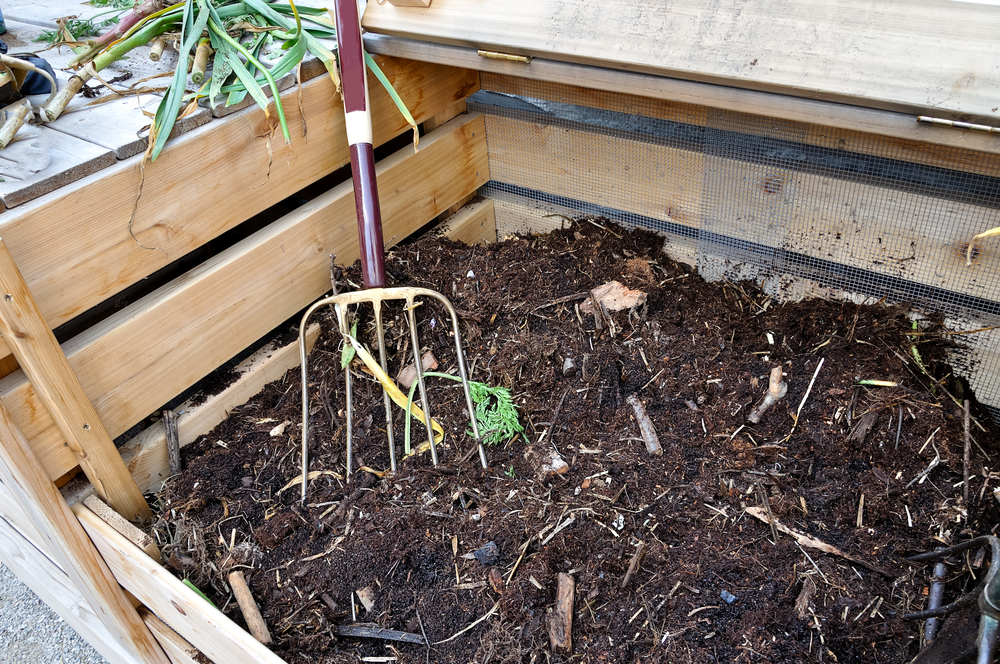
Interested in reducing your household waste? Consider composting! Composting might seem complicated and cumbersome, but it’s actually easier than it looks — and before you know it, you’ll have an excellent source of nutrients for your spring garden.
The fastest way to get finished compost for this year’s garden is to make an active, or “hot,” compost pile. By providing a steady supply of water and air to the pile, you’ll encourage the microorganisms that drive the composting process to work faster. Here are the five key steps for making compost in about 30 days.
1. Shred and chop.
Shred or chop materials as finely as you can before mixing them into the pile. For example, you can chop fallen leaves by running your lawn mower over them. The same strategy applies to kitchen scraps and the like — “the smaller, the better” is the rule for compost ingredients.
2. Mix dry browns and wet greens.
The two basic types of ingredients for making compost are those rich in carbon and those rich in nitrogen. Carbon-rich materials, or “dry browns,” include leaves, hay, and straw. Nitrogen-rich materials, or “wet greens,” include kitchen scraps and grass clippings; these work best when used sparsely and mixed in well so they don’t mat down. Your goal is to keep a fair mix of these materials throughout the pile.
3. Strive for size.
Build the pile at least 3 × 3 × 3 (or 4) feet so materials will heat up and decompose quickly. (Don’t make the pile too much bigger than that, though, or it will be hard to turn.) Unless you have this critical mass of materials, your compost pile can’t really get cooking. Check the pile a couple of days after it is built up—it should be hot in the middle, a sign that your microbial decomposers are working hard.
4. Add water as needed.
Make sure the pile stays moist, but not too wet. (It should feel like a damp sponge.) You may ned to add water occasionally. Or, if you live in a very wet climate, you may need to cover the pile with a tarp to keep it from becoming too soggy.
5. Keep things moving.
Moving your compost adds air to the mix. You can open up air holes by getting in there with a pitchfork. Even better, shift the entire pile over a few feet, bit by bit, taking care to move what was on the outside to the inside of the new pile, and vice versa. Or consider using a compost tumbler, a container that moves the materials for you when you turn it.
Do not compost meat, bones or fish scraps (they will attract pests), perennial weeds (they can be spread with the compost) or diseased plants. Do not include pet manures in compost that will be used on food crops. Banana peels, peach peels and orange rinds may contain pesticide residue, and should be kept out of the compost. Black walnut leaves should not be composted. Sawdust may be added to the compost, but should be mixed or scattered thinly to avoid clumping. Be sure the sawdust is clean, with no machine oil or chain oil residues from cutting equipment.
To gather kitchen wastes for your compost, keep a container with a lid and a handle under the sink. Consider using a stainless steel compost pail with air filter, or a ceramic model. If you don’t mind occasional smells, use an old ice-cream pail. Chop up any large chunks before you toss them in. When the container is full, take it out to your composter and toss in the contents.
With just a little effort, and a little savvy, you can have a wonderful mix of nutrient-rich compost ready in time for spring. Happy gardening!